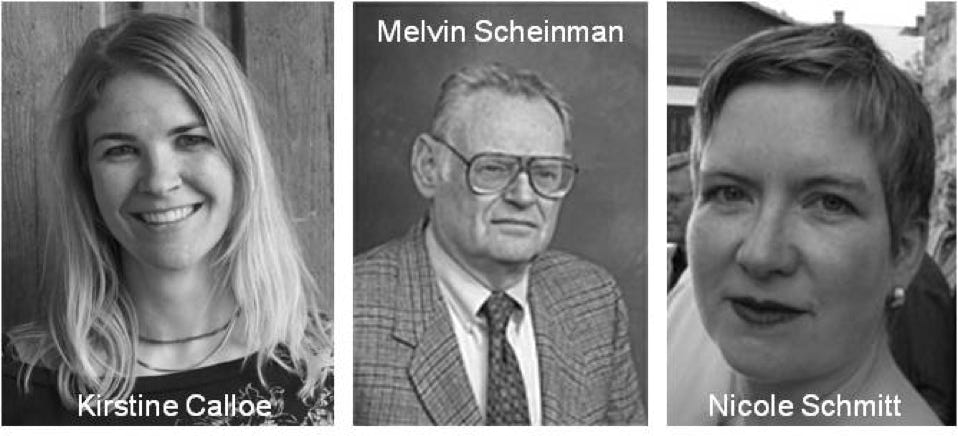Novel Nav1.5 channel mutations associated with Brugada syndrome
Dataset description: public
Dataset: registered users only, limited by CAGI Data Use Agreement
The CAGI submission deadline for the SCN5A challenge has passed as of October 4, 2011, 3PM EDT. We welcome the upload of predictions after the deadline for archival and comparison purposes, but these post-deadline submissions are not part of the CAGI experiment.
SCN5A encodes a sodium channel and the effect of mutations on current flow can be measured by patch clamp experiments. For this challenge, predictors need to predict the impact on current flow for three novel disease mutations.
Background
The cardiac action potential (AP) is the sum of a number of distinct ionic currents. It can be divided into five phases (phase 0‐4). From pacemaker cells of the SA node the initial depolarizing wave front will spread throughout the cardiomyocytes via gap junctions. If the depolarization is sufficient voltage‐dependent sodium channels (Nav1.5) are activated and allow Na+ influx. This results in a further depolarization of the membrane which will lead to opening of even more Nav channels. This positive feedback mechanism is seen as the rapid upstroke in the initial phase (phase 0) of the action potential. Nav1.5 is encoded by SCN5A and mutations in this gene have been associated with various diseases such as Atrial fibrillation, Long QT syndrome, Cardiac Conduction Defect, Sick Sinus Disease, and Brugada Syndrome (BrS).
Brugada syndrome (BrS) (OMIM 601144) is a rare clinical condition characterized by atypical right bundle branch block (RBBB) and elevated ST‐segments in right precordial leads in the absence of structural heart disease. Though most individuals with BrS are asymptomatic, the disease manifests at young age (20‐40 y) and men are more likely affected than women. Common symptoms are syncope and cardiac arrest or sudden death at rest or during sleep. BrS is inherited as an autosomal‐ dominant trait, with incomplete penetrance. To date, mutations in nine genes encoding ion channel subunits or gene products affecting ion channel function have been associated with BrS or proposed as risk factors (SCN5A, SCN1B, SCN3B, CACNA1C, CACNB2, KCND3, KCNE3, GPD1L, and MOG1). Mutations in SCN5A represent the majority with about 300 mutations in SCN5A linked to the syndrome. On a functional level, BrS mutations in SCN5A lead to loss of Na+ current through several mechanisms.
In this study, novel mutations in SCN5A were identified in two independent families with BrS. The effects of these mutations on Nav1.5 channel function were investigated. The mutations have been identified in Melvin Scheinman’s group at Department of Medicine, University of California San Francisco, California.
The mutant proteins were generated in the laboratory, heterologously expressed in CHO‐K1 cells and analyzed using the patch‐clamp technique. In these experiments, parameters such as current densities and channel kinetics (activation, inactivation, recovery from inactivation) were analyzed, comparing mutant channels to wild‐type channels. Thus the change induced by the mutant as a percentage change as compared to the wild type channel was measured.
Prediction challenge
Predictors are asked to submit predictions on the effect of the mutants on the Nav1.5 function with respect to current densities. The submitted prediction should be the percentage of current density reduction compared to the wild type channel with a standard deviation. The predictions will be assessed against the values obtained for each mutation in the patch‐clamp experiments.
Dataset: 3 single amino acid variants within the coding region of the SCN5A gene
The dataset file is only available for registered users, please register to the site to access.
Additional information: The nomenclature of the variants refers according to conventions to isoform 1 (NM_198056). The cDNA encoding hNav1.5 used in the electrophysiological experiments refers to isoform 2 (NM_000335) and is also known as hH1c, i.e. it lacks Q1077.
Sequencing of the plasmid shows the 3 variations compared to the NCBI reference sequence:
c.87 a‐>g (GCA‐>GCG) => A29A, silent (SNP identifier rs6599230)
c.2043 c‐>t (CAC‐>CAT), => H681H, silent
c.5353‐5355 CAC‐>CAT =>L1785L, silent (creates AflI restriction site)
OMIM identifiers:
Brugada syndrome: 601144
SCN5A: 600163
Prediction submission format
The prediction submission is a tab-delimited text file. Organizers provide a file template, which should be used for submission. In addition, a validation script is provided, and predictors should check the correctness of the format before submitting their predictions.
Download SCN5A submission template
Note: the validation script provided earlier was erroneous.
Download the corrected (2 Oct 2011) SCN5A submission validation script (not available).
In the submitted file, each row should include the following columns:
- Variant - The variant as listed in the prediction dataset above, use the order as provided in the template file
- Prediction - Prediction of the percentage of current density reduction compared to the wild type channel
- Standard deviation - SD of the prediction in column 2
In the template file, cells in columns 2-3 are marked with an "*". Submit your predictions by replacing the "*" with your value. No empty cells are allowed in the submission; if you cannot submit predictions for a variant, leave the sign "*" in these cells. Please make sure you follow the submission guidelines strictly.
In addition, your submission should include a detailed description of the method used to make the predictions (similar to the style of the Methods section in a scientific article). This information will be submitted as a separate file.
To submit predictions, you need to create or be part of a CAGI User group. Submit your predictions by accessing the link:"All submission forms" from the front page of your group. For more details, please read the FAQ page.
Dataset provided by

Kirstine Calloe (1), Marwan M. Refaat (2), Soren Grubb (1), Julianne Wojciak (2), Joan Carroll (2), Nancy Mutsaers Thomsen (1), Robert L. Nussbaum (2), Melvin M. Scheinman (2), Nicole Schmitt (1) (affiliations: 1 University of Copenhagen and 2 University of California, San Franciso)
